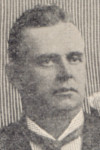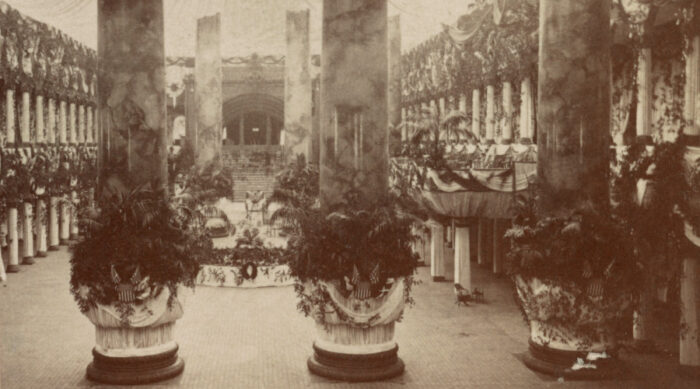
In going through my collection of D.C.-related books the other day, I came across another guide book to the city. I have often written about different ones – from those that were cobbled together by writers who had never visited the city, or those who managed to turn a brief visit into a chapter in a travelogue to those written by long-time residents of the city. The one I found is a little different. While the writer, Charles Melville Pepper, had indeed lived in the city for many years as a correspondent for the Chicago Tribune, this book, somewhat misleadingly titled Every-day Life in Washington, is more a compilation of descriptions of the city Pepper collected.
Charles Pepper was born in 1859 in Ohio. He graduated from the University of Wooster (today: College of Wooster) in the same state. He married Kitty Rose in 1884, and, two years later, the two moved to Washington. While he was mainly concerned with writing for the Tribune, his wife became a staple of the society pages.
In 1897, Pepper became interested in Cuba, writing numerous articles about the then-Spanish colony, including some published in the Washington Evening Star. When the Spanish-American War broke out the following year, he was in great demand as a correspondent. He later moved to Canada, continuing to work as a correspondent. In 1899, he published a book about his time in and impressions of Cuba.
It was the following year that he wrote his book on D.C. While the title would imply that he was looking at the life of those who make their home in the nation’s capital, in fact the second to sixth chapter are given up entirely to a description of the Presidential inauguration.
Pepper had gotten to know William McKinley even before he became President, so it is no wonder that Pepper had an excellent vantage point to the proceedings. He describes everything leading up to that moment, including the electoral vote count: “It is a momentous day when these electoral votes are counted, but not because of any uncertainty about the result. That has been known for months.”
In spite of the lack of uncertainty, he spends five pages on the subject before proceeding to the actual inauguration day.
After harrumphing about the inclement weather likely to greet the incoming President, Pepper describes what signed ticket you need to get into the Senate chamber to watch the Vice President be sworn in, then the race to the East Front, where the President will take the oath of office. While Pepper spends some time on some historical inaugurations, including Washington and Lincoln’s, he does not indicate in what way McKinley may have either embraced or subverted tradition.
Instead, he spends the next twenty pages on the pomp and circumstance following the inauguration, including the parade down Pennsylvania Avenue and the Inaugural Reception (“usually miscalled the inaugural ball”) that follows.

Here, finally, Pepper lets loose:
At the last inauguration in the center of the man room was a fountain. Around the base of the spray was a grotto of cork-bark and rocks, while in and about the fountain were placed aquatic plants, ferns, lilies, and vines. Around the edge were vines, blooming plants, and ferns. Over the balconies and about the columns smilax was trailed in graceful effects; while in front of the balconies, at intervals to conform with the flag-decorations, were arranged plaques of palm leaves and flowers alternated with wreaths, caught up with the national colors.
In short, it was a “scene of gorgeous, matchless beauty.”
Over the next few weeks, I will look at what Pepper had to say about Capitol Hill.
